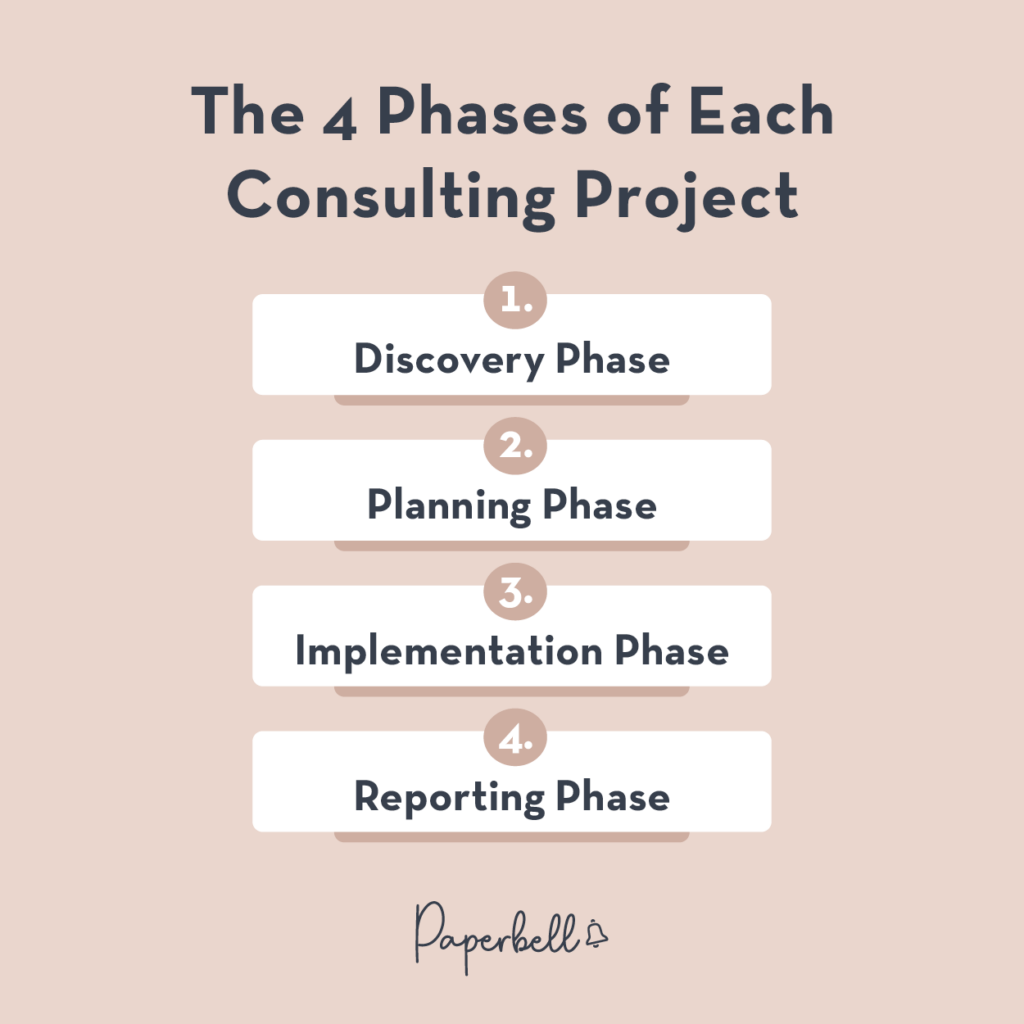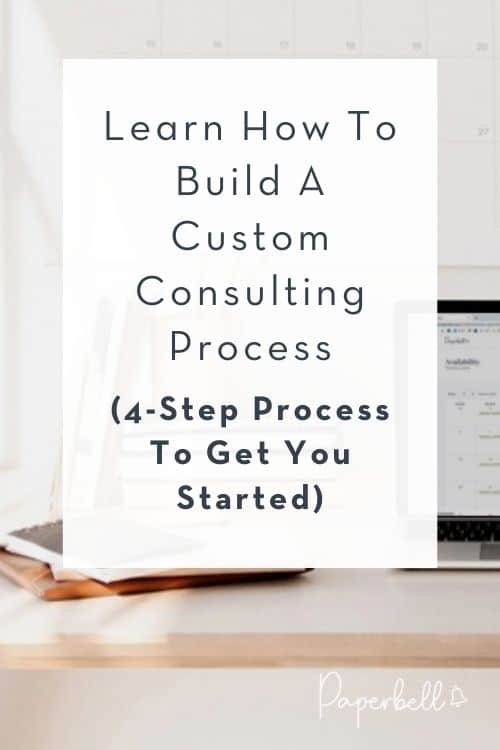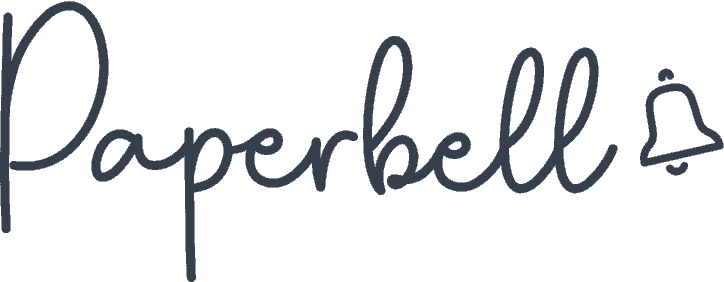Consulting is one of those expertise-based services that can appear very abstract at first to clients. It can bring a turning point into a company’s growth, but it can just as well be a waste of resources — or worse, a source of even more confusion for organizational leaders. So what sets a high-yielding consulting service apart from a bad investment?
For the most part, it’s how solid your consulting process is.
When you take responsibility for guiding a series of expensive, high-stake business decisions in an organization, you can’t just wing it. Without a well-structured, objective-driven consulting process, consulting services are just an expensive conversation. On the other hand, when you have a step-by-step formula for solving business problems with a strategic approach, you can bring better results for your clients.
Besides, it also helps you exude more confidence when presenting and working on cases because you’ll trust that you can guarantee a transformative outcome.
In this article, we’ll look at why developing consulting processes is crucial to running a professional consulting business, the role of each of the consulting phases, and how to develop your own consulting steps.
Benefits of Having Consulting Processes
Consulting services are traditionally thought of as simply advising, in other words, providing information and giving instructions. In reality, that’s just the tip of the iceberg. Experienced consultants know that their value won’t simply be judged by what they know but by how effectively they can create change in their client’s business. The process of consulting is much more complex than simply serving up expertise.
That effectiveness is created by dedicated research, data collection, and planning, as well as going the extra mile to make sure changes are actually implemented. You need to keep your clients accountable and show them how what sounds great in theory can be put into practice — not just at the beginning of projects but all the way through.
To deliver maximum results, you need to set clear expectations for both yourself and the client organization on how you’ll work together, it’s important to ensure you are both on the same page before your get started.
You need to propose a process that can get them from their current business challenges to their desired future, whether that’s conducting a diagnosis of deep-rooted issues, facilitating learning in the organization, or being involved in the optimization of key areas.
That’s what will make your client’s management team trust you and justify the price it costs to work with you.
The 4 Phases of Each Consulting Project

Before we jump into the four phases that typically make up every consulting process, it’s important to highlight that this is not a ready-made recipe. Each consulting case is different, and your impact as a professional lies in figuring out how this can be fitted to the unique challenges your clients are facing.
By adding your own approach to each of these stages, you can create a project management roadmap for your client on how your collaboration would look from start to finish with them.
Even if you work on seemingly similar cases, the length of each phase might differ significantly. Sometimes, finding the right solution (or figuring out what the real problem is) takes longer than putting it into practice; other times, it’s the other way around.
Nevertheless, most consultants need to flesh out their process in detail for each of these phases to create more certainty for them and the client organization. Organizational change can only happen when you identify the right problems to tackle.
So let’s dive into the four key phases in a typical business consulting process.
Discovery Phase
The first phase is the phase where you’re getting to know each other with a new client or redefining the terms of your collaboration with an existing one. It’s where you interview your client about the business challenges they need help with and assess whether it’s a case you can take up and work on.
It’s also the time you have a chance to present and demonstrate your corporate strategy expertise and the approach you will take with the case. Building trust is an important element of this phase, so showcasing your consulting services in this way will allow you to earn that trust.
Asking the right questions and gathering enough information at the beginning phase of a project is crucial for you to be able to structure your offer for your client, do some brief data analysis, and lay down the terms of your partnership. This might be done in a single meeting or take multiple meetings, but typically, at the end of your discovery process is when you tie the knot and get your agreement signed by your client.
This is the foundation of how the rest of your work together will go, so it’s important to gain as much clarity here as you can, but not let this phase drag on so long that you’d find yourself giving away your services for free. Once you have a customized plan for your contract, you can move on to the next phase and start working on the case.
Planning Phase
Now you have more of a clear picture and some skin in the game, it’s time to dig deep with the second phase. The most impactful consultants ask questions and listen before they speak, and that’s exactly what you should be doing in your planning phase. Open the case with critical questions so that you can find the root cause of the problem they came to you with.
Rushing through this stage imposes the risk of barking up the wrong tree, creating more work and wasting valuable time and resources on trying to solve the wrong problem. The more consulting frameworks you have up your sleeve, the more insights you’ll be able to create here, so it’s worth updating your inventory before you arrive at your first meeting.
[ Read: 7 Consulting Frameworks That Win Big Clients ]
As the focus areas of your case begin to crystallize, you’ll likely need to go back and do excessive research on the data and industry trends that surround the central issue in your case. Once you’ve done that, you can come back to your client with an in-depth analysis of the current situation, present strategic solutions for their business, and the iterative process. Your client can now make a decision about the winning solution, and you can develop a detailed plan for how it can be implemented in their organization.
Implementation Phase
In some consulting contracts, planning is where the story ends. However, the devil is in the details, and it’s often during this phase when certain elements of the company’s strategy start to make sense. Putting the plan into practice will likely reveal more insights (or problems to work on). Sticking around when that happens gives you the opportunity to give even more value to your client.
They say that effective consultants work themselves out of a job. What this means is that the real impact you create isn’t just in giving advice; it’s in creating transformation. To guarantee business growth, your job doesn’t stop at giving up-to-date, relevant information (though naturally a must) but with overseeing what leaders do with that information. That’s what builds case studies and, in the long run, your reputation as a consultant.
Implementation, of course, doesn’t mean you’ll be doing the job. Sometimes, it means regular meetings with the key decision-makers in order to measure progress on objectives and help them course-correct to drive change forward. Other times, it means getting involved in various business functions, talking to key people, perhaps a team member from each level of the organization, and consulting with all stakeholders on the project.
This phase is where you have the chance to maximize your impact, facilitate learning, and improve organizational effectiveness.
Reporting Phase
The final step of the consulting process is often overlooked, even though this is the phase both you and the client organization can learn the most from. Preparing consulting reports may be required from you throughout the consulting process (especially during the research and planning phase), but the one report that should definitely be a part of your workflow is the final project report.
[ Read: 4 Simple Steps to an Impactful Consulting Report (+ Free Google Doc Template) ]
Your report will go into depth on all aspects of the business, from the business model to the biggest challenges the company currently faces and how you’re solving them.
The purpose of this phase is to evaluate the results that have been achieved after implementing the strategies you’ve suggested and present these findings to your client organization. The lessons learned here will become an asset for the company you’ve worked with, as well as a case study for your portfolio.
Create Your Own Consulting Process
The four stages of a consulting process that we’ve just outlined will give you the pillars you can rely on when planning your workflow and collaboration terms with your client. But the real power of your consulting business lies in developing your own unique approach and philosophy.
If you’re at the beginning of your career, following this standard four-step process will work perfectly fine for most clients. Then as you gain experience and perspective as a professional, you’ll have the chance to shape your own process in a way that works best for you and the type of clients you work with.
Customized VS Standard Consulting Processes
You can have more than one consulting process in your inventory to use based on the cases you’re working on. Sometimes, they will fit like a glove, and you can straight away outline them on the spot during your discovery sessions. Other times, you’ll find that they need more tweaking and adjusting based on the challenges of the case and what your client is willing to agree to.
These processes simply serve as templates in your business so that you can take shortcuts in your thought process and optimize your work. Much like your consulting frameworks, the more options you have in your inventory, the more you can expand your portfolio and raise your game. While your frameworks are your tools to solve problems within a client contract, your processes will help you set expectations and provide context to your collaborations.
How To Develop Your Own Consulting Process
Here are three approaches you can take to develop your own consulting processes in your practice.
1. Analyze Past Projects
Divide the cases you’ve worked on in the past into categories, and look for patterns in the processes you followed. Which stages of the process had the least impact and could be eliminated? What steps are you missing in your usual process that could add more value to your clients?
2. See What Works In Your Niche
If you specialize in a specific industry or consulting niche, you might find that some processes work in that area better than others. The other way round, you can also look at what processes consultants in other niches follow that you can learn from.
3. Question The Status Quo
Processes are there to simplify your work, not to limit you. If you strongly believe that things could be done in such a way that’s different and more efficient than how the rest of the consulting world does it, dare to question the rules and commit to your own approach. In the end, the only thing that matters is to bring as much value to your clients as you can, in your own unique way.
Use Software to Standardize Your Consulting Process
Now that you have a process, how can you make sure it happens every single time? The easiest way is to use software to put it on autopilot. Paperbell lets you create a custom onboarding flow for each package you offer. Your client will be presented with a contract to sign, payment options, scheduling, and any resources and reminders they need to be successful. It’s all inside Paperbell.










